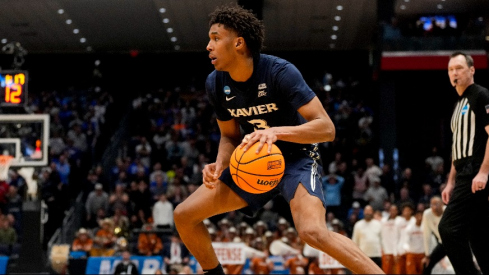
With the Orange Bowl two weeks away, it is time to analyze the Clemson Tigers' offensive and defensive schemes.
We will first turn to the Clemson base offense. The Tigers' offense, led by offensive coordinator Chad Morris, shares many similarities with Urban Meyer and Tom Herman's Ohio State attack.
Not only are the Tigers a spread-read offense, they utilize the same foundational run concepts and formulaic approach as Ohio State. While some of the formations and motioning is different, the Ohio State defense will face an overall approach they see all year in practice.
Below I examine the Clemson base run game, attacking the edges, and throwing deep.
Strength in Numbers
All spread-to-run offenses begin with the premise of altering modern football arithmetic. Defenses have one unblocked defender at all times – the ball carrier’s counterpart. The passing game generally forces defenses to play that unblocked defender as a safety.
But once a quarterback hands off the football a defense has two unblocked defenders – the ball carrier and quarterback's counterpart. And this second defender is generally closer to the line of scrimmage, often a backside defensive end away from the run play.
The spread offense seeks to reverse this dynamic by making an unblocked defender account for the quarterback with a read. The read forces a defense to play the front side run more honestly, but if the opponent does not account for the quarterback the offense has the ball in the hands of a dynamic play making quarterback.
This Goes one of Two Ways
Although all spread-to-run offenses utilize this premise, they diverge in methods. The biggest distinction is between offenses whose base play is outside zone and those who begin with inside zone and power. Clemson, like Ohio State, fits the latter category. The Tigers often run inside zone from some pistol variation, often with an H-Back slice blocking across the formation.
The Tigers use power blocking in various forms. One favorite is inverted veer, particularly near the goal line. Against South Carolina, Morris used both the backside guard and H-back to pull into the hole.

The Tigers utilize inverted veer and other quarterback runs in short yardage, as it fits well with the Tigers' personnel. Quarterback Tajh Boyd may be the Tigers' best short yardage runner, while tailback Roderick McDowell is the shiftier of the two. To protect the run game, Morris utilizes extensive amounts of shifts and motions to slow linebacker reads and pull defenders outside the box.
Stressing the Edge
The next major component of the Tigers' offense is attacking horizontally through jet sweeps and wide receiver screens. Morris utilizes all manner of quick screens, but the Tigers most frequently throws flash or tunnel screens to outside receiver Sammy Watkins.
And Going over the top
Once a defense over commits to stop the run and screen game, the Tigers throw vertically off play-action. And they have no better target than Watkins, perhaps the most dynamic receiver in college football.
Clemson emphasizes four vertical routes, as well as three-level floods patterns with Watkins taking the top off the defense, as above. Morris also has Boyd fake inside zone then hit Watkins with a seam pop pass over aggressive linebackers or against middle of the field safety play.
And Clemson has an experienced, battle-tested quarterback in Boyd. As previously discussed, Boyd does not have ideal measurables but is adept at changing his launch point and arm angle to deliver the football. But this can result in sloppy mechanics, leading to bouts of inaccuracy and occasional interceptions.
The Tigers' goal is to stay ahead of schedule and throw off play-action, rather than rely on the drop back passing game. In other words, the Tigers utilize a spread inside run game, horizontal stretch plays, and vertical throws off play-action. Sound familiar?

